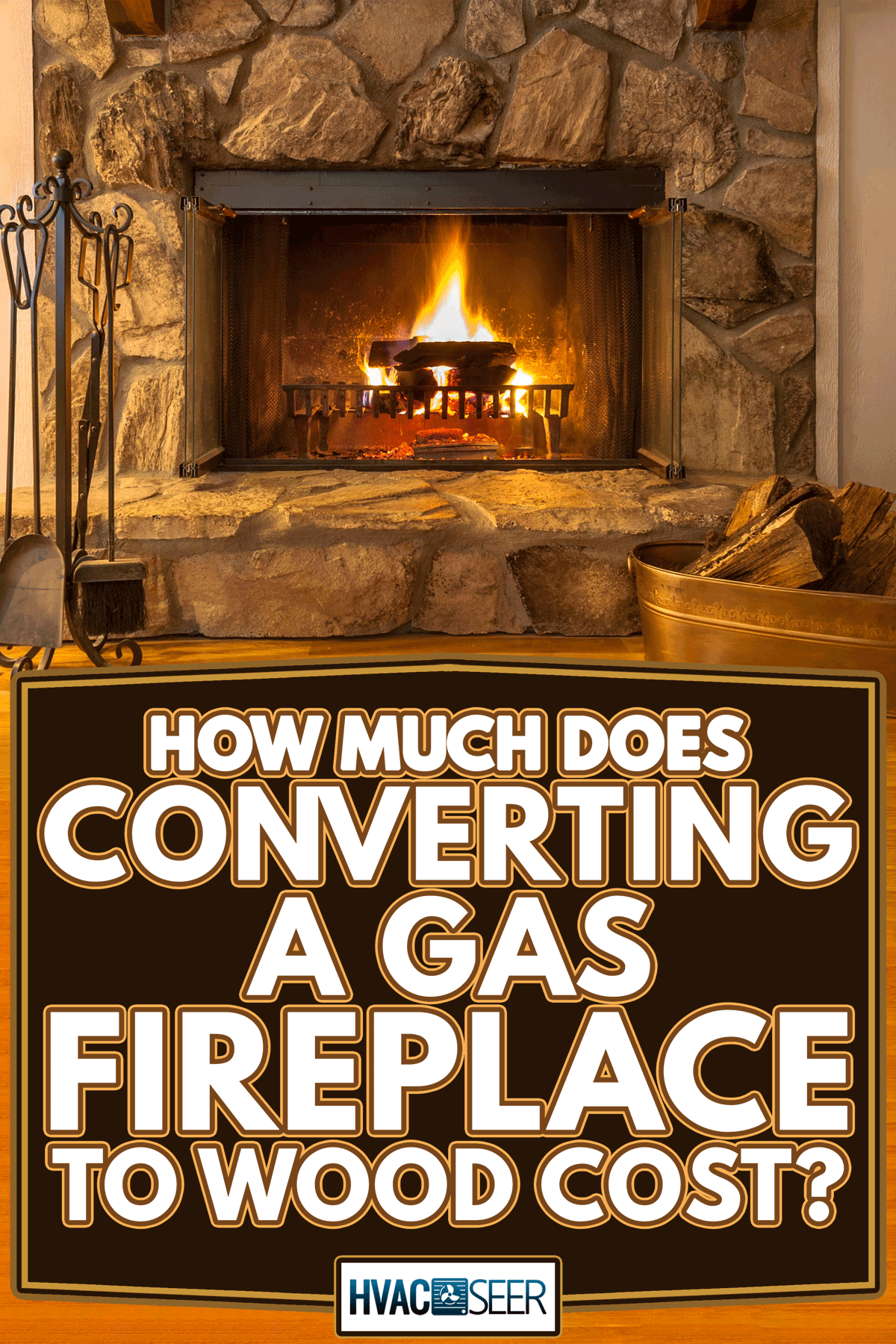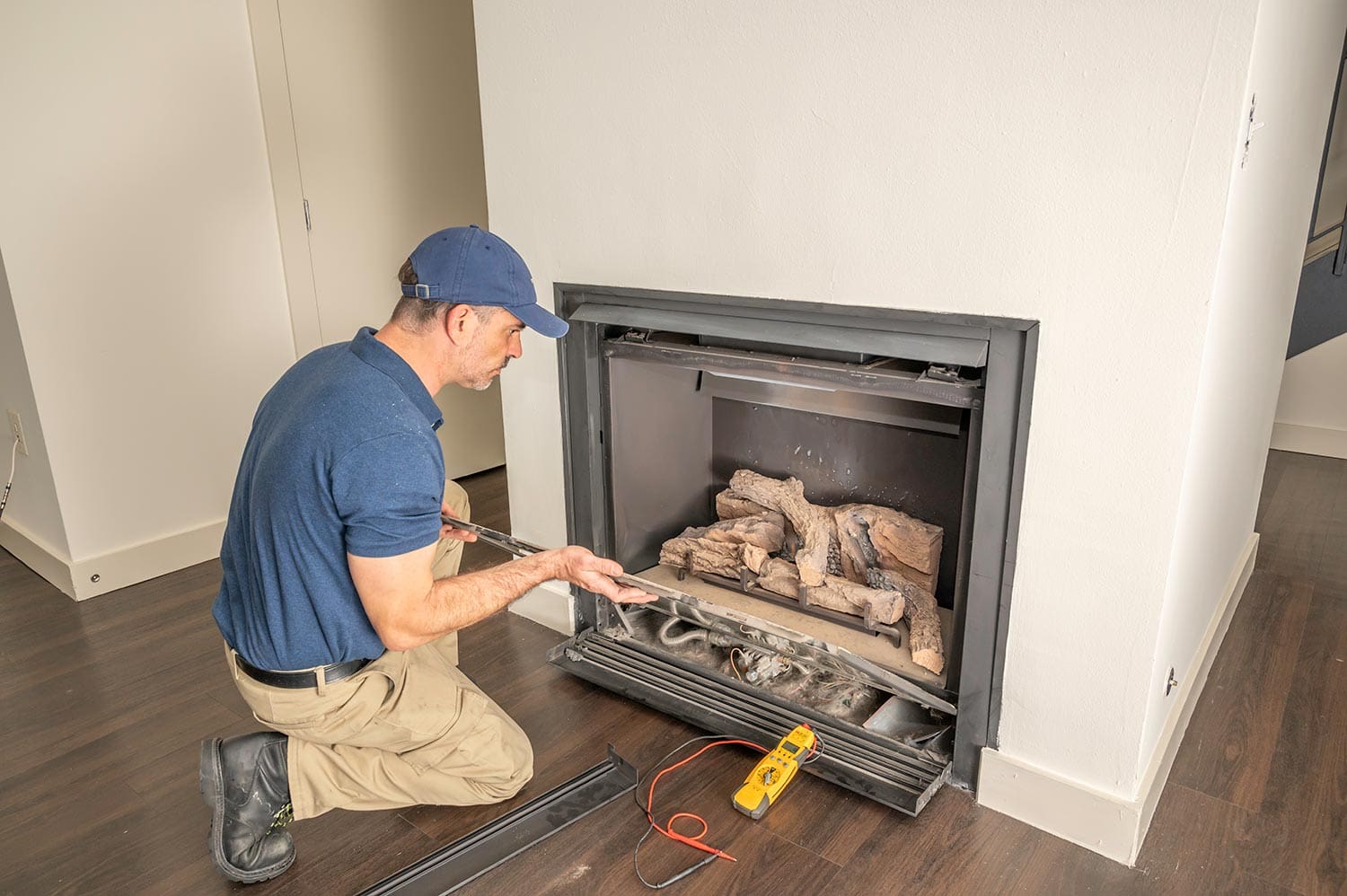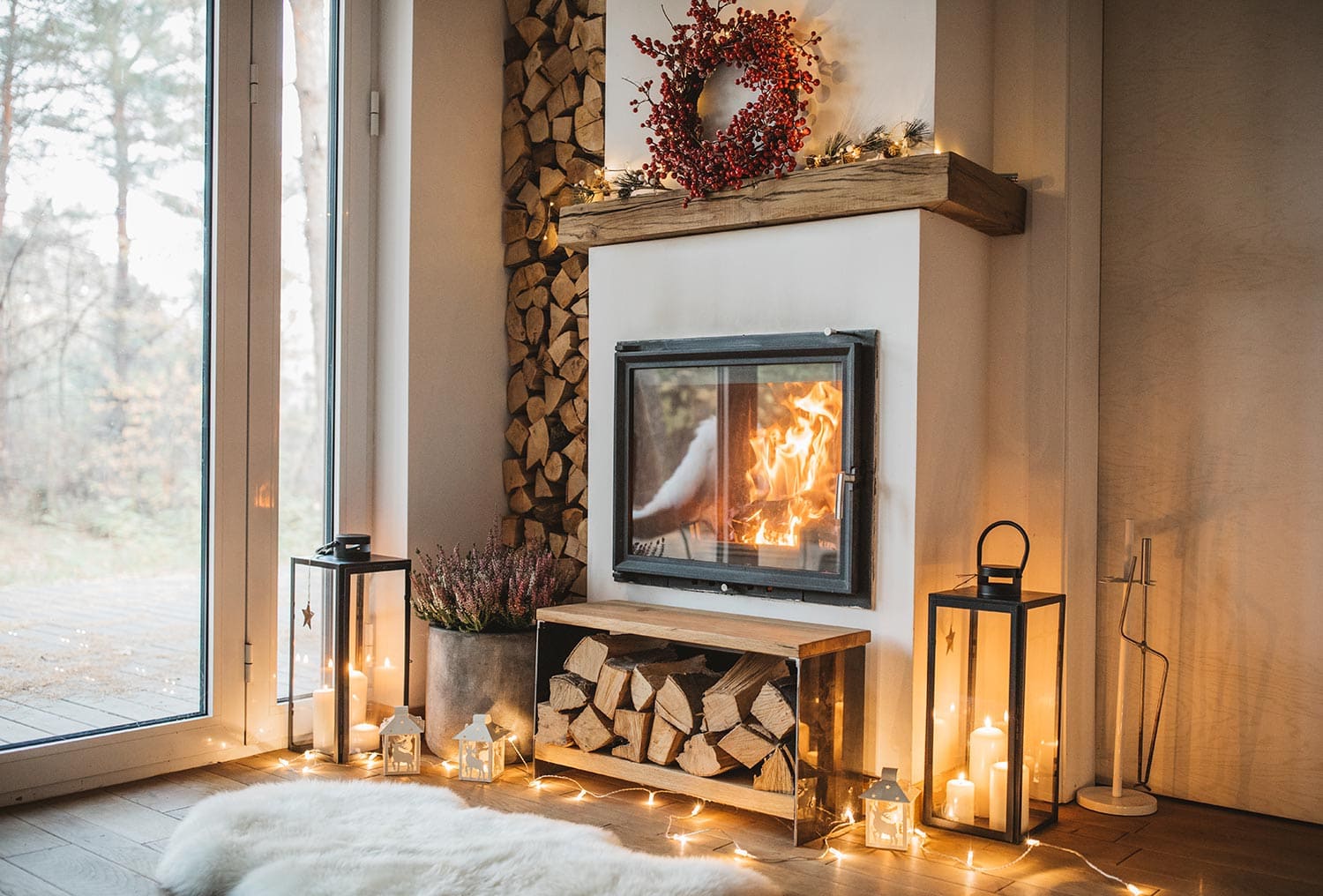Many homeowners have asked, how much does it cost to convert from a gas-burning fireplace to a wood-burning one? Even though gas fireplaces are convenient and easy to use, many still want the experience that comes with having a traditional wood fireplace. So, we picked experts' minds on this subject to tell you just how much it would cost.
In good working condition, it would roughly cost around $300 to convert a gas fireplace to a wood-burner. In some cases, it may only cost half that much. But the price truly depends on the extra work needed.
But before converting your gas fireplace, there are still things you need to know about the whole process. Below, we discuss what it takes to convert your fireplace and what other expenses to be aware.

Can We Burn Wood In A Gas Fireplace?
It may be tempting to chuck some wood logs into your gas fireplace and call it a day but understand that this is quite dangerous. Most gas fireplaces are designed to function on gas alone. They are not capable of supporting the heat that comes from burning wood.

Burning wood in gas fireplaces comes with a lot of risks, and not only will it put your home in danger, but your life as well. Saving a few hundred dollars just to experience wood burning in your fireplace is not worth your life and the lives around you.
Instead, convert your gas fireplace into a wood-burning one. As previously stated earlier, it doesn't cost much if everything is in working condition.
Visit this article if you wish to know more about this topic: "Can You Burn Wood In A Gas Fireplace?"
Is Gas To Wood Conversion Possible?
There are many factors to consider when it comes to converting a gas-burning fireplace to wood burning. As such, do keep them in mind when you consider converting your gas-burning fireplace.
First, a fireplace and chimney inspection is a must to determine if it's possible. Next, prepare any necessary adjustments needed for the fireplace and chimney. As it stands, the chimney inspection will determine whether or not conversion is possible.
Things To Consider For Fireplace Conversion

If you're considering converting your gas fireplace at home, there may be a lot of questions going through your mind. However, we narrowed it down to just three key considerations, so you would know where to start. Calling in a chimney inspector greatly helps you understand the situation.
Are Both Fireplace And Chimney In Proper Working Condition?
Knowing the condition of both of these is key to understanding whether or not conversion is possible. It is critical to know how sturdy these two parts are before considering wood burning as an option.
Chimneys equipped with a gas venting system are sturdy enough for a gas-burning unit. However, wood-burning fireplaces require a far sturdier chimney flue liner to ensure safety.
And even if the fireplace chimney flue liner can handle both gas and wood-burning, you need to consider the condition of the whole system. A professional contractor would give you all the details that you need to know about this.
Not only that, you would need to have a spark arrestor installed into your chimney cap. This is to ensure that no embers would escape that could cost a fire on the roof or the ground.
Is The Fireplace The Right Type For Conversion?
Before you can start thinking about converting it, you need to make sure you can convert it. Some gas-burning fireplaces, especially those in newer homes that have factory-made units installed, were never meant to burn wood.
And as stated in an earlier discussion, do not attempt to burn wood in your gas-burning fireplaces. Only furnaces that are specially designed to handle both can handle such an activity.
What To Do If Fireplace And Chimney System Are Not Suitable?
If both of them are not suitable, you might need to rethink the whole idea of having a wood-burning fireplace. A fireplace replacement would cost you around $2,400. And at worst, as much as $30,000 if you don't have a working chimney.
As much as you would like to have the experience of real wooden logs burning inside the hearth of your home, you might be better off sticking with what you have. Unless you have that much money to burn, most experts would agree that keeping your gas-burning fireplace is both economical and more friendly to the environment.
How To Change Gas To Wood Burning Fireplace?

If your fire ventilation system is deemed sturdy enough for wood burning, then any necessary chimney repairs are planned. This may involve removing the old gas log kit, installing a fireplace damper, and selecting a suitable wood grate. A wood grate is necessary because the gas log crate installed will be too fragile to handle the higher temperatures found in wood-burning fireplaces.
On top of that, you'll have to choose either capping the gas line or converting it into a gas log lighter. This is often a safer and easier way to light a fire.
While it's possible to do part of this as a DIY project, most experts would advise you to hire a contractor. Not only would it be safer, but only a professional should work on something that involves natural gas.
Cost To Convert Gas To Wood Burning

If everything is in good working condition, it would only cost you between $150 and $300. That's how much it would cost if the contractor just needs to remove the old gas logs and cap the line. Once you factor in chimney repairs and replacements that need to be done, that's when the price starts to increase.
Chimney repairs add up quickly. Replacing a few tiles in your flue won't cost you more than $100, but relining the whole thing could cost up to $5,000. You would need to ask the contractor for a proper estimate so you have an idea of how much this project would cost.
Which Is Better, Gas-Burning Or Wood-Burning?
In a battle for efficiency, gas-burning fireplaces have the upper hand. That's because they burn more cleanly and efficiently, resulting in fewer carbon emissions. They also turn on and off instantly as opposed to wood-burning fireplaces.
One of the downsides to owning a gas-burning fireplace, though, is that there's a much-reduced fun factor. Especially those who grew up around a wood fireplace might find the experience of owning a gas fireplace boring and synthetic.
When it comes to wood-burning fireplaces, it's all about the realism of having an open flame burning, smelling the wood burn, and hearing it cackle in your home. You get a very authentic sensation that a gas fireplace can't replicate.
The problem with owning a wood-burning fireplace is that there are more safety issues involved, besides the higher carbon emission. Also, it's less efficient when it comes to heating, compared to gas-burning fireplaces. Not only that, it takes a while to get a fire going, and once it's there, you'll have to wait until it completely dies down to end it.
So, if you want a more cost-efficient fireplace, gas-burning is for you. But if you prefer the more traditional method of heating your home, wood-burning is the way to go.

Maintenance Of Wood Fireplaces
Watching real wooden logs burn is enjoyable, but you must be mindful of the dangers that come with them. This is to avoid the occurrence of a chimney fire.
Chimney fires are a natural and unavoidable result when burning wood. This is the result of soot buildup if you do not properly maintain your chimney.
Make a chimney sweep appointment twice a year to ensure that there's no soot buildup. This would also allow both the fireplace and the chimney to be inspected, ensuring that both are in good working condition.
Additionally, consider buying a glass door and a blower for your fireplace. Not only will they prevent sparks and embers from tumbling out from the hearth, but they also help to circulate the heat. They also prevent children and pets from getting too close to the fire.
Check this glass door on Amazon.
In Summary
As long as your gas fireplace can be converted and is well-maintained, it won't cost a lot of money. However, the problem starts when additional repairs would be required. You might consider keeping your gas fireplace around if the whole system needs to be replaced or the chimney rebuilt entirely.
On top of that, remember that there's whole a slew of maintenance required to keep your wood-burning fireplace safe if you do end up converting to one. And always call in a professional if you need help.
Check these articles out if you have any more burning questions. These would surely keep you entertained.

